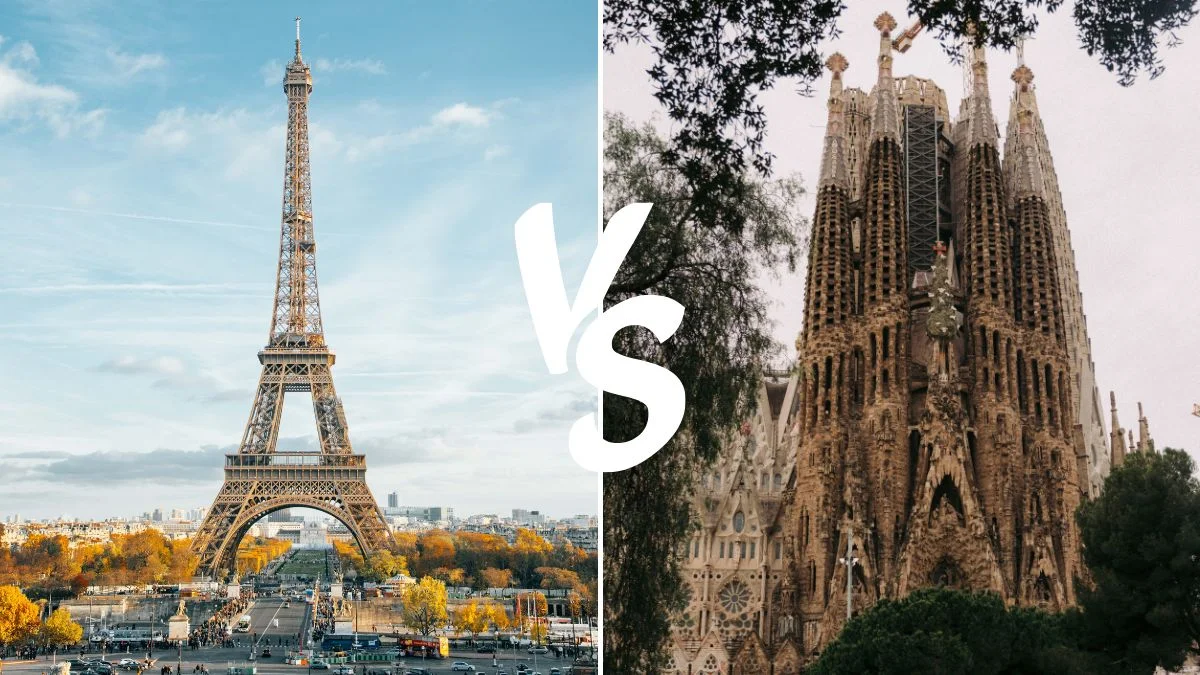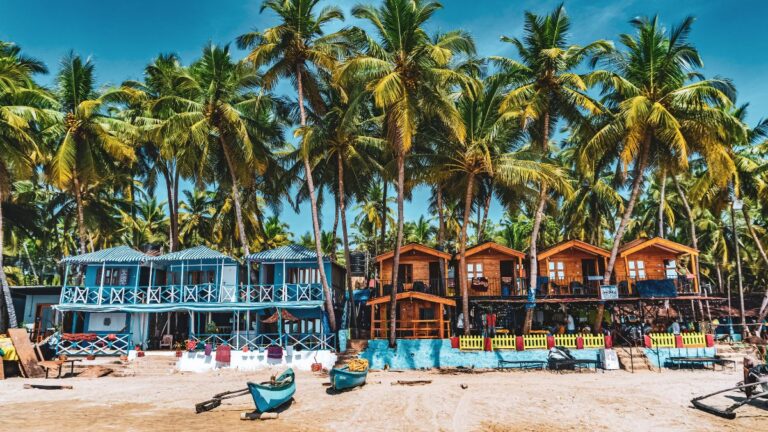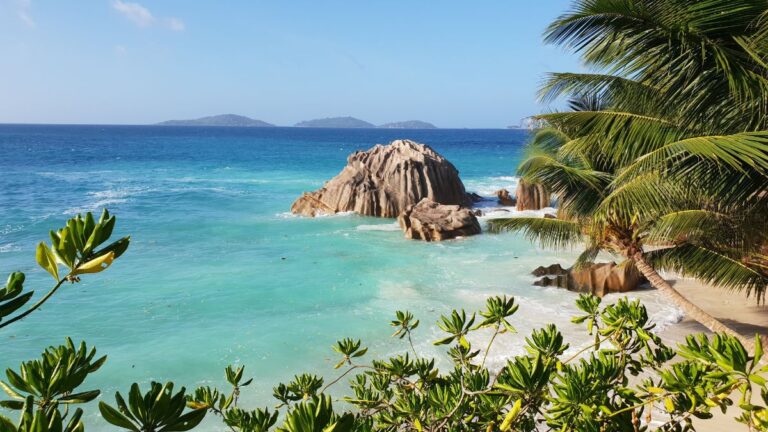Barcelona Vs. Paris: A Clash of Traveler’s Paradises

As participants in Amazon Associates and other programs, we earn from qualifying purchases. This comes at no additional cost to you. For more details, see our Affiliate Disclosure.
When it comes to European escapades, two cities often top the list: Barcelona and Paris. Both destinations boast a potent cocktail of history, culture, and gastronomy, each one a jewel in the crown of its respective country. They are undeniably unique, yet they share a magnetism that draws travelers from all corners of the globe.
Choosing between the allure of Barcelona’s vibrant seaside allure or Paris’s enchanting city lights can leave even seasoned travelers in a bind. But fear not, as this article aims to provide a balanced overview of both these traveler’s paradises, shining a light on their distinctive charms and what makes them a tantalizing toss-up for your next adventure.
Historic Tug of War: Barcelona’s Gothic Quarters vs. Paris’s Louvre
Few cities encapsulate the richness of history quite like Barcelona and Paris. With every turn in their respective landscapes, stories of the past unfold in beautiful and often unexpected ways.
The Gothic Quarter (Barri Gòtic) is the heart of Barcelona’s old city, a labyrinth of narrow medieval streets filled with centuries-old buildings. From the remains of the Roman city walls to the Barcelona Cathedral, the Gothic Quarter is a testament to the city’s colorful and complex history. As you wander its maze-like streets, you’re sure to feel the echoes of the past around every corner.
In contrast, Paris hosts the Louvre, the world’s largest art museum and a historic monument in its own right. As a former royal palace, it is as much a work of art as the masterpieces it houses. The vast collections span from ancient civilizations to the 21st century, with celebrated works such as the Mona Lisa and Venus de Milo acting as grand symbols of artistic achievement. A stroll through the Louvre is akin to traversing the corridors of global history, an experience that leaves an indelible mark on every visitor.
In the end, choosing between Barcelona’s Gothic Quarter and Paris’s Louvre is a matter of personal preference. Do you prefer getting lost in the evocative, winding streets of an ancient city, or would you rather immerse yourself in the vast collections of art and history in a world-renowned museum? This decision reflects the broader choice between Barcelona and Paris: two cities that, despite their shared appeal to history enthusiasts, offer distinctly different encounters with the past.
Culinary Clash: Paella vs. Coq Au Vin
Food forms a fundamental part of any travel experience, and when comparing culinary heavyweights like Barcelona and Paris, one can’t help but salivate at the thought of the delights in store. This gastronomic duel sees two iconic dishes face-off: Barcelona’s Paella versus Paris’s Coq Au Vin.
Paella, native to Valencia but a staple across Spain, including Barcelona, is a dish that bursts with flavors as vibrant as the city itself. A medley of saffron-infused rice, an array of seafood or meat, and a smoky touch from the traditional wood-fired cooking, Paella is often enjoyed communally, mirroring Barcelona’s sociable spirit. From casual beachside chiringuitos to elegant eateries, Paella offers a mouthful of Barcelona’s local tastes and vibrant food culture.
On the other side of the gastronomic ring, we have Coq Au Vin, a classic French dish that reflects Paris’s indulgent and refined cuisine. Coq Au Vin is a slow-cooked chicken dish, braised in red wine (typically Burgundy) with lardons (small strips or cubes of pork fat), mushrooms, and possibly garlic. As the ingredients meld together over hours, they create a rich, deeply flavorful stew that is comforting and elegant in equal measures, much like Paris itself.
So, will it be the rustic charm and sociable nature of Barcelona’s Paella, or the slow-cooked elegance and indulgence of Paris’s Coq Au Vin? Much like choosing between these two enchanting cities, it might just come down to your personal palate preferences. Either way, your tastebuds are in for a treat.
Architectural Aesthetics: Sagrada Familia vs. Eiffel Tower
There’s an undeniable aesthetic appeal to the built environment of a city, and in this regard, both Barcelona and Paris are visually resplendent in their unique ways. Two structures emblematic of these cities are the Sagrada Familia and the Eiffel Tower, each one a testament to the architectural vision and innovation of their creators.
In Barcelona, the Sagrada Familia stands as an extraordinary example of Antoni Gaudí’s visionary modernist style. This monumental basilica, still under construction more than a century after its inception, captivates with its intricate facades and soaring towers. Gaudí’s imaginative fusion of architecture and nature results in an awe-inspiring edifice that’s as much a testament to human creativity as it is to divine inspiration. The Sagrada Familia is not just a building; it’s a symphony in stone that encapsulates Barcelona’s spirit of artistic innovation.
Paris, meanwhile, boasts the Eiffel Tower, Gustave Eiffel’s iron marvel that has become the global symbol of France. When it was erected for the 1889 Exposition Universelle, it was a marvel of engineering, and it remains a feat of design today. With its elegant lines and sweeping views of the Parisian landscape, the Eiffel Tower is more than just a sightseeing spot; it’s a landmark that encapsulates the romantic soul of Paris.
These architectural icons, the Sagrada Familia and the Eiffel Tower, reflect the distinctive aesthetics and cultural philosophies of Barcelona and Paris. Their appeal extends beyond their physical presence; they have become symbols of the cities they grace, embodying the spirit and ethos of these urban landscapes.
Cultural Comparisons: Catalan Spirit vs. Parisian Chic
The cultural dimensions of Barcelona and Paris are as diverse as they are intriguing. Both cities are steeped in history and tradition, yet they embody contrasting characteristics that make each unique.
Barcelona pulsates with the indomitable spirit of Catalonia. Known for its vibrant street life, the city is a melting pot of cultures, with an irresistible energy that manifests in its music, language, traditions, and festivals. Barcelona’s culture is steeped in the ethos of ‘seny i rauxa’ – a Catalan phrase representing a blend of wisdom and madness – reflecting the city’s balance between deep-rooted traditions and an insatiable appetite for innovation. This spirit is evident in everything from the impassioned strains of a Catalan rumba to the festive clamor of a ‘correfoc’ fire run.
On the other hand, Paris exudes an air of sophistication and chic that is quintessentially Parisian. Its culture is characterized by high fashion, gourmet cuisine, and intellectual discourse. Cafés are the city’s cultural crucibles, where Parisians partake in long conversations over a cup of coffee, discussing everything from art and philosophy to politics. The Parisian approach to life is encapsulated in the phrase ‘joie de vivre,’ or ‘joy of living,’ symbolizing the city’s dedication to elegance, pleasure, and refinement.
Thus, the choice between Barcelona and Paris is, in many ways, a choice between two distinct cultural attitudes. Do you align more with the passionate, eclectic spirit of Barcelona, or does the sophisticated, intellectual allure of Paris resonate with you? Whichever city you choose, you’re guaranteed a rich cultural experience that will linger in your memory long after your trip has ended.
Exploring Nightlife: Las Ramblas vs. Champs-Élysées
A city’s pulse is often most palpable under the cloak of night, and both Barcelona and Paris come alive when the sun sets. Comparing nightlife experiences in these cities leads us to two iconic avenues: Las Ramblas in Barcelona and Champs-Élysées in Paris.
Las Ramblas, a bustling boulevard running through the heart of Barcelona, epitomizes the city’s energetic nightlife. Its vibrancy extends well into the night, with a multitude of bars, clubs, and street performers providing entertainment. The adjoining Gothic Quarter’s narrow, winding lanes hide a myriad of tapas bars, salsa clubs, and intimate Flamenco shows. The night here is young until the early hours, reflecting the typical Spanish schedule where dinners start late and nights out even later.
Paris’s Champs-Élysées, known as ‘the most beautiful avenue in the world’, offers a contrasting, yet equally enticing, nocturnal experience. Lined with theaters, luxury boutiques, and high-end restaurants, the avenue represents Paris’s refined taste and elegance. Nearby, the glamorous cabarets like Moulin Rouge and Lido de Paris offer spectacular shows, and nightclubs play music that caters to every preference. Parisian nightlife, although less frenetic than Barcelona, offers an air of sophistication and an understated vibrancy.
Whether you prefer the vivacious, late-night allure of Las Ramblas or the chic, elegant nightlife of Champs-Élysées largely depends on your personal preference. However, whether it’s Barcelona’s spontaneous spirit or Paris’s cultured charm, both cities promise unforgettable nights that stretch into memorable dawns.
Natural Beauty Face-Off: Beaches of Barcelona vs. Gardens of Paris
When it comes to natural beauty, both Barcelona and Paris offer different, yet equally enchanting, attractions. Barcelona flaunts stunning Mediterranean beaches, while Paris boasts some of the most elegant gardens in the world.
In Barcelona, the beaches provide an irresistible draw. Just steps away from the city center, you’ll find several kilometers of sandy coastline where city life meets the allure of the sea. The most famous, Barceloneta Beach, buzzes with energy, inviting locals and tourists alike to bask in the sun, dive into water sports, or simply enjoy the vibrant beach bars. The more tranquil Nova Icaria or the picturesque Mar Bella, further from the city center, offer peaceful alternatives. Barcelona’s beaches provide a perfect blend of relaxation and recreation, a sun-drenched showcase of the city’s love for life under the open sky.
Paris, though landlocked, is no stranger to natural beauty with its meticulously manicured gardens. The Jardin du Luxembourg and Tuileries Garden are living works of art, showcasing French formal garden design at its finest. These green oases in the heart of Paris are filled with elegant statues, dramatic fountains, and beautifully landscaped flowerbeds. Offering a tranquil escape from the city’s hustle and bustle, Paris’s gardens are the epitome of refined relaxation, where nature and artistry meet.
Whether you’re a beach lover drawn to Barcelona’s seaside charm or a garden enthusiast enchanted by Paris’s leafy retreats, both cities promise a delightful encounter with nature, each in its distinctive style. So, will it be sand between your toes or a stroll among blooming flowers? The choice mirrors the broader decision between the energetic vibe of Barcelona and the sophisticated allure of Paris.
Artistic Atmosphere: Picasso vs. Monet
Art is an inseparable element of both Barcelona and Paris, with each city having played a significant role in the evolution of Western art. Central to their artistic narratives are two iconic artists: Pablo Picasso in Barcelona and Claude Monet in Paris.
Picasso, although born in Málaga, spent his formative years in Barcelona, and his evolution as an artist is deeply intertwined with the city. The Picasso Museum in Barcelona’s El Born district showcases this relationship, housing an extensive collection of his early works. Picasso’s Blue Period, a time of exploration and innovation, was heavily influenced by his experiences in Barcelona, reflecting the city’s creative energy. Barcelona itself is a canvas of artistic styles, and Picasso’s enduring influence is a testament to the city’s vibrant artistic atmosphere.
Paris, on the other hand, is the city of Claude Monet, one of the founders of French Impressionist painting. Monet’s revolutionary approach to painting, characterized by capturing the transient effects of light and color in the natural landscape, was largely developed in Paris. His most iconic works, such as the Water Lilies and Haystacks series, can be admired at the Musée de l’Orangerie in Paris. Like Monet’s impressionistic masterpieces, Paris itself often feels like a beautifully painted scene, bathed in changing hues as the day progresses.
In the end, the choice between Picasso’s Barcelona and Monet’s Paris is about more than just personal preference for an artist or an artistic style. It is about identifying with a city’s artistic soul, its creative pulse, its visual narratives. Barcelona, with its innovative spirit, or Paris, with its timeless elegance, which one paints a picture that resonates with you the most?
Shopping Showdown: Barcelona’s Mercat de la Boqueria vs. Paris’s Le Marais
When it comes to retail therapy, both Barcelona and Paris offer shoppers an array of choices, each unique in their appeal. The iconic Mercat de la Boqueria in Barcelona and the historic Le Marais district in Paris are two such shopping experiences, offering a taste of the local culture alongside a delightful retail experience.
Barcelona’s Mercat de la Boqueria is a feast for the senses. Located on the bustling La Rambla, this market is filled with vibrant colors, enticing smells, and lively chatter. From fresh fruits, vegetables, and seafood to artisanal cheeses, meats, and a variety of local delicacies, the market offers a taste of Catalonia’s rich culinary heritage. You’ll also find stalls selling a variety of local goods, making it a wonderful place to shop for unique souvenirs. The Boqueria isn’t just a market; it’s a culinary and cultural experience reflective of Barcelona’s vibrant spirit.
In contrast, Paris’s Le Marais offers a different but equally captivating shopping experience. This historic district, with its narrow, winding streets and beautiful architecture, is home to a range of boutiques, vintage stores, art galleries, and bakeries. Here you can shop for everything from high-end fashion and vintage treasures to exquisite home decor and unique art pieces. The charming shops and cafés reflect Paris’s chic and artistic character, offering a retail experience steeped in Parisian elegance.
Whether you prefer the lively atmosphere and culinary treasures of Barcelona’s Mercat de la Boqueria or the chic boutiques and historic charm of Paris’s Le Marais, each offers a unique shopping experience that goes beyond the act of purchasing, immersing you in the city’s culture and lifestyle.
Budget Breakdown: The Cost of Visiting Barcelona vs. Paris
Planning a trip to either Barcelona or Paris necessitates a look at the financial aspect of your journey. Both cities have a lot to offer, but your budget can significantly influence your experiences, from accommodations and dining to sightseeing and shopping.
Accommodations in both cities can range from budget-friendly hostels to luxury hotels. On average, however, you may find that accommodations in Paris are more expensive than in Barcelona. This difference can be particularly pronounced when comparing centrally-located options.
When it comes to dining, both cities offer a wide array of choices, from street food and local markets to high-end gourmet restaurants. Barcelona, with its tapas culture, allows for a varied and relatively economical dining experience. In contrast, Paris, known for its sophisticated culinary scene, can be more expensive, especially if you choose to dine in more upmarket areas or at renowned establishments.
Sightseeing costs can also vary. Many of Barcelona’s iconic sights, such as the beaches or the vibrant neighborhoods, can be explored for free. However, entry to famous landmarks like the Sagrada Familia or the Picasso Museum does incur charges. Paris boasts many free sights, like the Champs-Élysées or the exterior of the Notre-Dame Cathedral, but visiting iconic attractions like the Louvre or the Eiffel Tower requires purchasing tickets.
Finally, when it comes to shopping, Paris, known for its high-end boutiques and fashion houses, can be quite costly. Barcelona, while offering a range of shopping experiences, can be a bit more budget-friendly, especially if you shop at local markets like the Mercat de la Boqueria.
While both cities can be enjoyed on a range of budgets, a trip to Barcelona may generally be more affordable than a comparable trip to Paris. However, with careful planning and budgeting, both cities can offer unforgettable experiences without breaking the bank.
Here’s a general comparison of costs that you might encounter when visiting Barcelona and Paris. The actual costs may vary based on many factors, including the time of your visit, your personal preferences, and changes in pricing.
| Expense Category | Barcelona | Paris |
|---|---|---|
| Accommodation (per night) | ||
| Budget (Hostel) | €20-€30 | €25-€40 |
| Mid-Range (3-star Hotel) | €70-€120 | €100-€150 |
| Luxury (5-star Hotel) | €200-€400 | €250-€500 |
| Food (per day) | ||
| Budget (Fast food or self-catered) | €10-€20 | €15-€30 |
| Mid-Range (Moderate Restaurants) | €30-€50 | €40-€70 |
| High-End (Fine Dining) | €70-€100+ | €100-€200+ |
| Transportation (single ticket) | ||
| Public Transportation | €2.20 | €1.90 |
| Taxi (per km) | €1.15-€1.40 | €1.29-€1.50 |
| Attractions (average price per ticket) | ||
| Main Attractions (e.g., Sagrada Familia / Louvre) | €20-€30 | €10-€20 |
| Guided Tours | €30-€50 | €30-€60 |
The Verdict: Weighing the Pros and Cons of Barcelona and Paris
After exploring the unique characteristics of both Barcelona and Paris, the verdict boils down to personal preference as both cities offer an array of enticing experiences that appeal to different tastes.
Barcelona, with its vibrant blend of urban energy and seaside tranquility, is perfect for travelers seeking a mix of culture, history, and beach relaxation. The city’s artistic vitality, embodied by icons like Picasso and Gaudí, its lively nightlife, and its dynamic culinary scene offer a robust and immersive travel experience. On the other hand, the cost of visiting the city is typically lower than in Paris, making Barcelona a more budget-friendly option. However, the late-night culture of Spain may not appeal to everyone, and the city’s popular spots can be quite crowded, especially during peak travel seasons.
Paris, often hailed as one of the most beautiful cities in the world, offers a sophisticated travel experience. From its world-class museums and historical landmarks to its chic boutiques and gourmet dining, Paris is a city of refinement and romance. The city’s gardens offer tranquility amidst the urban landscape, and the Parisian cultural scene, imbued with art, fashion, and intellectual discourse, is unparalleled. Yet, Paris can be more expensive to visit than Barcelona, and the city’s sprawling layout may require more use of public transportation or taxis.
In the end, the choice between Barcelona and Paris is a delightful dilemma to have. Both cities promise unforgettable experiences and a wealth of memories. Whether you’re drawn to the artistic vibrancy and Mediterranean charm of Barcelona, or the timeless elegance and cultural richness of Paris, you’re in for a treat. Remember, travel is a personal journey, and the best choice is the one that resonates most with your travel aspirations.






